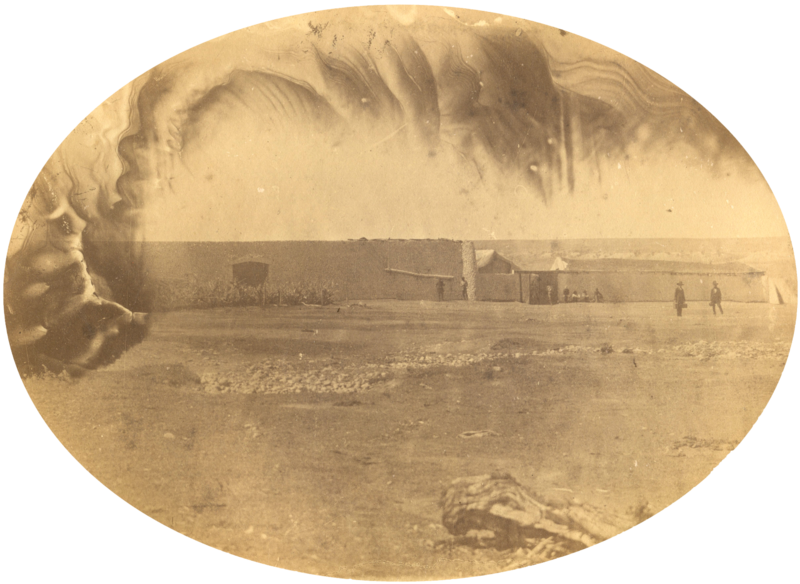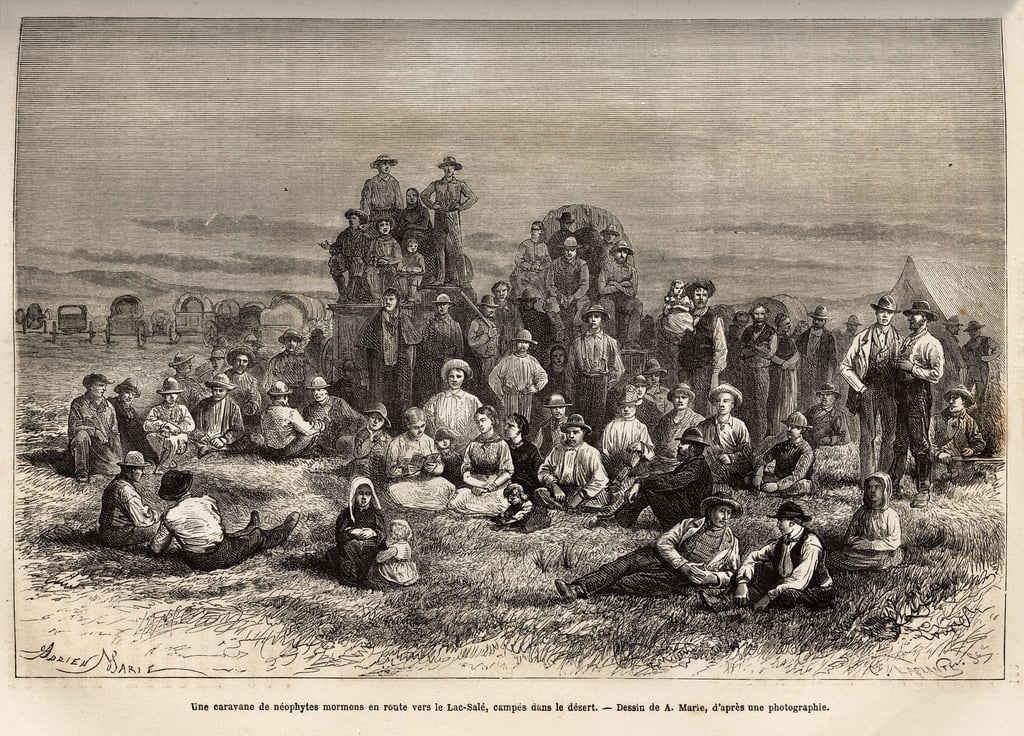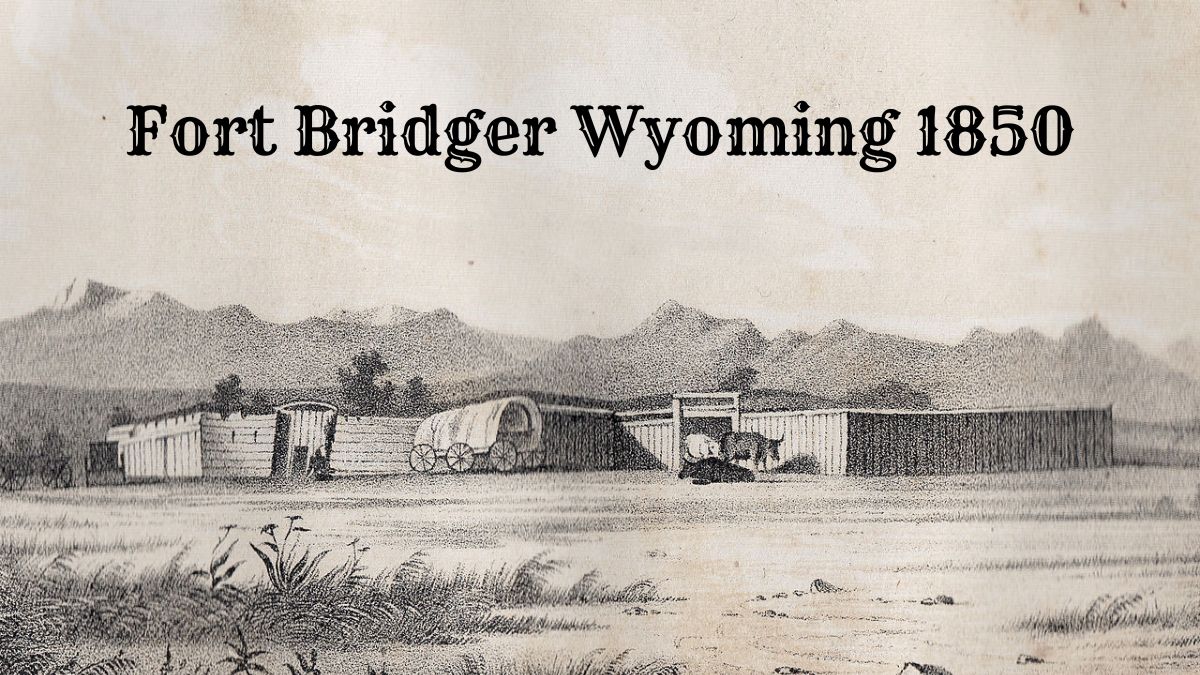Fort Bridger, Wyoming, is a site of profound historical significance in the American West.
Established in 1843 by Jim Bridger and Louis Vasquez, this fort began as a fur trading post and evolved into a crucial resupply point along the Oregon Trail.
Its strategic importance was further highlighted when it became a U.S. Army outpost in 1858, and it played a key role in various regional conflicts.
Today, Fort Bridger is a state historic site where visitors can explore preserved buildings and museum exhibits and engage in annual reenactments. This offers a glimpse into the Westward expansion’s rich history and cultural heritage.
History of Fort Bridger

Fort Bridger, located in Wyoming, originates deeply in the early fur trade of the 19th century.
Established in 1843 by the renowned mountain man Jim Bridger and his partner Louis Vasquez, it was a fur trading post and a strategic supply point along the emigrant trails.
An experienced frontiersman, Jim Bridger, identified the need for a trading post to service the growing number of pioneers heading west. He was well-respected amongst fellow mountain men and played a pivotal role in expanding the West.
By the mid-1850s, Fort Bridger became a vital resupply point for travelers along the Oregon Trail.
The fort’s influence grew when it became part of the U.S. Army military outpost network in 1858, solidifying its position in the regional economy and travel routes.
The transition from a fur trading post to a military fort marked an adjustment to the declining fur trade and the rise of military presence in the area.
The U.S. Army occupied the site to control the significant travel corridor, a communication and transportation hub.
Fort Bridger was pivotal during the various regional conflicts and was a logistical base throughout the Civil and Indian Wars. It remained in military service until the Army officially abandoned it in 1890.
Today, Fort Bridger is a state historical site where visitors can explore the region’s rich history through preserved original buildings and structures, museum exhibits, and annual reenactment events.
Fort Bridger State Historic Site

Fort Bridger State Historic Site is a rich historical resource that reflects its diverse past, from a fur trading post to a Mormon outpost and later a military fort.
The site preserves a significant chapter in the United States’ westward expansion.
Preserved Buildings
Fort Bridger features several historic structures well-maintained for visitors to explore.
Among these are the double-log houses, which exhibit typical architecture from the mid-1800s, and the blacksmith shop, an essential feature during the fort’s operation that today offers a glimpse into the era’s craftsmanship.
Museum Exhibitions
The site’s museum hosts various exhibitions on the lives of mountain men, the fur trading business, and the Mormon trails.
Detailed displays and artifacts tell the story of this strategic trading post and its role in facilitating westward migration.
Visitor Information
Getting There:
- By Car: Accessed most commonly by car, visitors find it along Interstate 80.
- By Air: The nearest airports are located in Salt Lake City, Utah, and Casper, Wyoming.
Facilities at the Site:
- Parking: Ample parking is available for visitors.
- ADA Accessibility: Facilities are ADA accessible, ensuring everyone can enjoy the historic site.
Activities:
- Tours: Guided and self-guided tours provide insight into the area’s history.
- Events: Various events throughout the year, including live reenactments.
Hours of Operation:
- Summer: 9:00 AM – 5:00 PM
- Winter: Reduced hours; visitors should check before planning their trip.
Admission Fees:
- Adults: $4
- Children (under 18): Free
Accommodation:
Nearby towns offer a range of lodging options, from hotels to campgrounds, to suit different preferences and budgets.
Cultural Significance of Fort Bridger

Fort Bridger, Wyoming, holds a significant place in American history, particularly concerning the Mormon pioneers.
Strategically located, the fort was initially established in 1843 as a trading post and resupply point on the Oregon Trail.
It later became a critical stop along the Mormon Trail, which thousands of Mormon pioneers traveled in the mid-1800s as they migrated to the Salt Lake Valley.
Events and Reenactments: Every year, Fort Bridger hosts a variety of historical reenactments and the Fort Bridger Rendezvous, a living history event that celebrates the region’s fur-trading past.
These events underscore the fort’s historical role and engage visitors with vivid portrayals of life during pivotal moments of westward expansion.
Museum Displays: The site includes museum facilities that exhibit artifacts from the fort’s varied past.
These collections encompass the fort’s military history and highlight the Mormon pioneers’ everyday experiences.
Educational Impact: Fort Bridger offers insights into the challenges faced by the Mormon pioneers through interpretive programs and educational resources.
This education extends to understanding the interactions between the emigrants and indigenous tribes and the economic and cultural exchanges.
- Preservation Efforts: The State Historic Site ensures the preservation of several original structures, providing a tangible connection to the past.
- Community Connection: The local community remains closely tied to the fort, often participating in preservation and interpretation efforts.
Events and Reenactments
Fort Bridger, Wyoming, hosts various annual events that honor its rich history, with a particular focus on the legacy of mountain men who were instrumental in the American westward expansion.
Mountain Man Rendezvous
This yearly gathering replicates the 19th-century fur trade rendezvous and is a key highlight.
Participants dressed in period attire engage in activities such as:
- Trading goods
- Demonstrations of traditional crafts
- Competitions in skills typical of the era
Event Schedule
| Date | Event | Description |
|---|---|---|
| Early July | Fort Bridger Rendezvous | A historical reenactment with traders and mountain men demonstrations. |
| Mid-August | Black Powder Shoot | A competition featuring muzzle-loaded rifles. |
Living History Days
During these days, visitors can observe:
- Traditional blacksmithing
- Cooking demonstrations
- Storytelling sessions that depict life during the fort’s prime.
Guided Tours
Throughout the summer, visitors can join tours led by knowledgeable guides who provide insights into the daily life of mountain men, offering a perspective on the skills and ingenuity required to thrive in the wilderness.
Educational Workshops
These workshops are designed to educate attendees on:
- Primitive survival techniques
- The historical impact of the fur trade
- The role of Fort Bridger in American history
Explore More: 15 Historic Forts in Wyoming
Fort Bridger Preservation
Preservation work at Fort Bridger focuses on maintaining and restoring the historic structures at the site. The Wyoming State Parks, responsible for the fort, have implemented several measures to ensure the longevity of these buildings.
- Restoration Projects: Key historic structures undergo regular assessments for restoration needs.
- Projects often involve structural stabilization, restoration of historical appearance, and weatherproofing to protect against the elements.
- Interpretive Displays: Interpretive displays are placed throughout the site to educate visitors.
- These convey the history of the fort and the significance of each building.
- Community Involvement: Local community members and historical societies often participate in clean-up days and volunteer for maintenance projects, reflecting a collective effort in preservation.
- Funding: Preservation initiatives are supported through grants, donations, and government funding.
- These financial resources are vital for ongoing maintenance and restoration tasks.
- Guided Tours: The state park offers tours that emphasize preserving history.
- Guides highlight preservation challenges and successes during these educational walks.
- Regulations and Policies: Strict policies govern modifications and usage of the historic structures to prevent damage.
- These regulations ensure that any work done on the buildings is in line with historical preservation standards.

Cory is a website owner and content creator who enjoys fishing, history, coin collecting, and sports, among other hobbies. He is a husband and father of four.
Romans 15:4 For whatever was written in former days was written for our instruction, that through endurance and through the encouragement of the Scriptures we might have hope.

